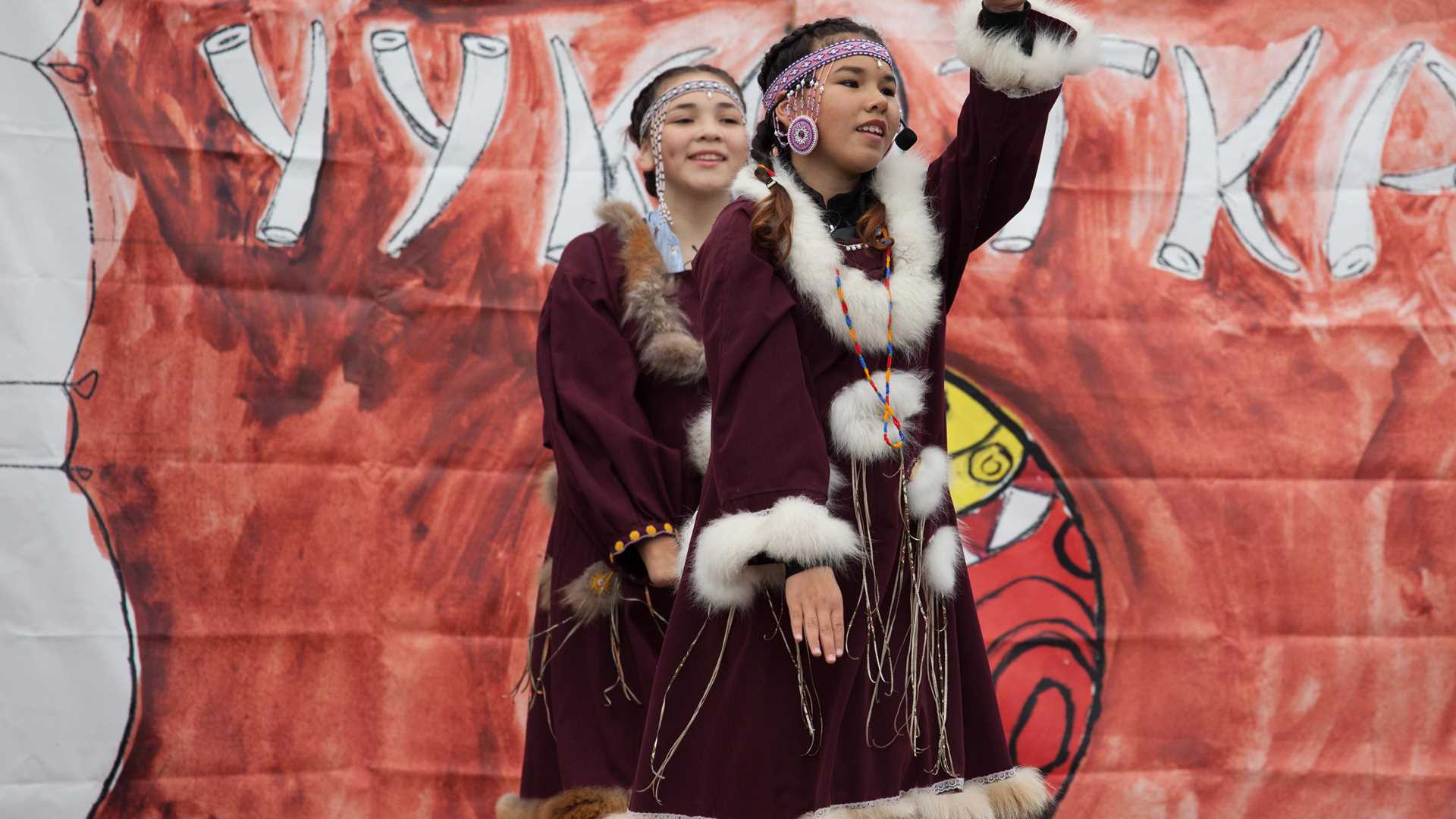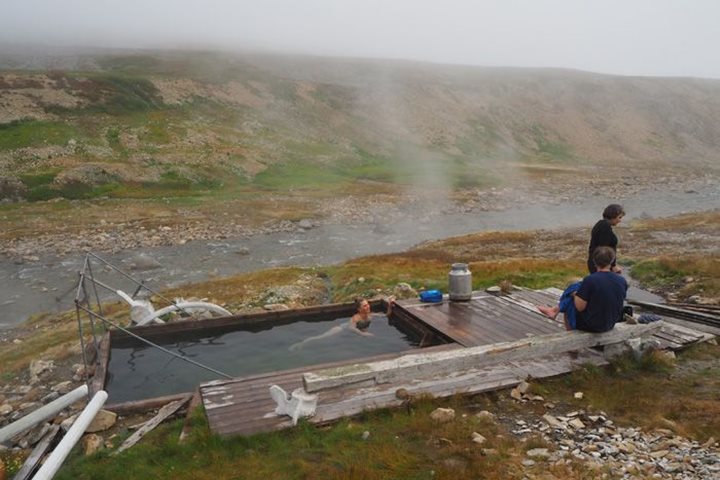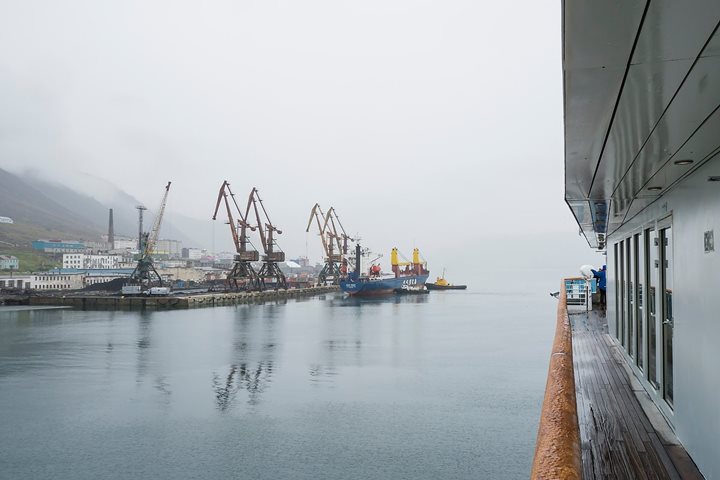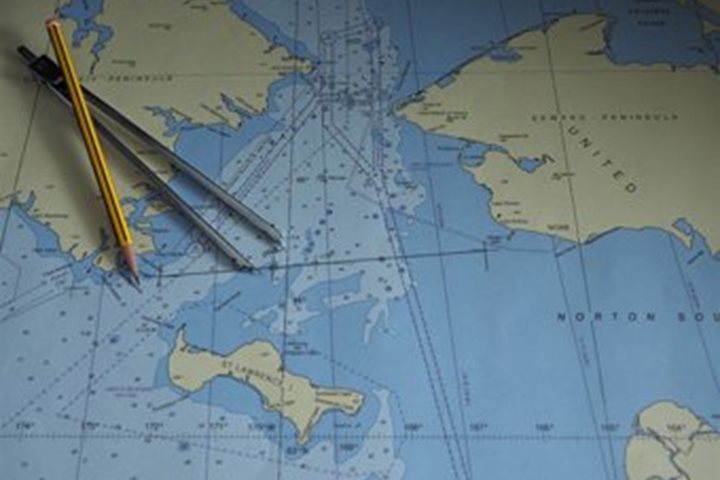The Chukotka region of Russia’s far east remains the most sparsely populated region in the country, comprising a space six percent larger than the state of Texas but home to a mere 50,000 inhabitants as of 2010. Though human civilization is scarce, wildlife is abundant, and so National Geographic Orion sails towards her morning destination.
Our morning visit would include a stop at a nearby Chukchi settlement. Meynypilgino is a small village just inside a wild river mouth open to the sea. This community, one of just 400 people, supports a strong fishing culture and small sockeye salmon fishery. On the way to Meynypilgino, however, the ship saw plenty of wildlife worthy of early waking and special note!
Walruses, the largest pinniped on the planet, curiously popped their heads out of the water at a distance. As the ship steamed past, grey whales spouted their bushy blows and sunk back into their inky waters, searching for critters to feast on. This animal sports an incredibly long migration, calving in Mexico’s Baja California, then repositioning far north into the Bering Sea come feeding season. This migration is notoriously risky, as their main predator patrols the coast in search of young calves, weak adults, and especially the combination. Killer whales are often successful in their take of a grey whale, most notably in the Monterey Bay region of central California’s coast.
Meynypilgino is culturally reverent of the grey whale and walrus that often line their coastline, and do not whale or seal the animals. They are a community founded on fishing (mostly sockeye salmon) and reindeer herding. In the 1990s, the latter was somewhat lost from traditional, a feature that these people have sought to recover.
The ship brought all guests ashore, focusing the visit on a cultural performance. The village’s youth skillfully danced and sang for all present – but that wasn’t all. When the performance ended, all adolescents involved mingled with us, showed the common community games, and practiced their English with all. Fresh salmon, ikura (salmon roe), and freshly baked bread were offered as a mid-morning snack. Town dogs roamed about, fires blazed, and young children snacked on fresh fruit delivered to the village from the ship.
Back onboard, the afternoon at sea began. Smooth seas and reflective water lent itself to aerial bird photography, while naturalist Adam Maire delivered a presentation on grey whale habitat and life history. After the opportunity to rest, Grace Winer took the stage with the fascinating tale of the Harriman Alaska Expedition. A beautiful day concluded with an evening recap and delicious meal – but not to be missed, National Geographic Orion’s very own crew show will debut in the lounge tonight!







